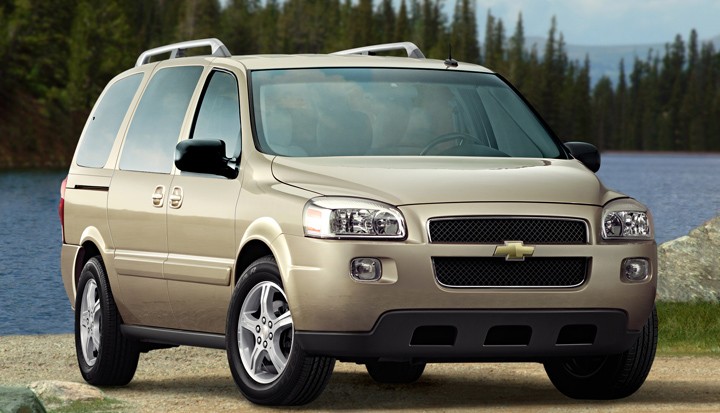General Motors once attempted to redefine the minivan segment with a series of vehicles they termed “crossover sport vans.” While the intention might have been to blend SUV styling with minivan practicality, the execution, particularly with models like the Buick Terraza, left much to be desired. This initiative, emerging around 2005, aimed to revive GM’s presence in the family vehicle market, but instead, it highlighted the pitfalls of badge engineering and a misunderstanding of consumer needs.
Following the less-than-stellar reception of the Pontiac Aztek, GM looked to revamp its minivan offerings, which were still based on the older Chevrolet Venture platform. Instead of a ground-up redesign, GM opted for a badge-engineering approach, launching four “crossover sport vans” simultaneously for the 2005 model year. This quartet included the Chevrolet Uplander, Pontiac Montana SV6, Saturn Relay, and, notably for our focus, the Buick Terraza.
The marketing strategy was to distance these vehicles from the traditional “minivan” label, emphasizing a crossover appeal with SUV-inspired aesthetics and available all-wheel drive. However, beneath the surface, these were still fundamentally minivans, and arguably, not very competitive ones at that. The Buick Terraza, positioned as the more upscale offering in this group, aimed to attract buyers seeking a touch of premium in their family hauler.
Despite the marketing spin, the Buick Terraza and its siblings faced an uphill battle. Even by 2005 standards, the fundamental shortcomings of these vehicles were apparent. One critical area was performance. The standard 3.5-liter V6 engine, producing a modest 200 horsepower, coupled with a dated 4-speed automatic transmission, resulted in sluggish acceleration. Compared to class leaders like the Honda Odyssey and Toyota Sienna, which boasted more powerful engines and smoother 5-speed transmissions, the Buick Terraza felt underpowered and unrefined. While a later 3.9-liter V6 with 240 horsepower was introduced, it arrived too late to significantly change the perception of these vans.
Beyond performance, safety and practicality were also areas where the Buick Terraza and its counterparts fell short. In an era where competitors were enhancing safety features, GM’s “crossover sport vans” lagged behind. They lacked head-protecting curtain airbags, relying instead on thorax side airbags, which were less comprehensive in protection. Furthermore, in terms of interior innovation, Chrysler had already set a new benchmark with its Stow ‘n Go seating system. This feature allowed both the second and third-row seats to fold completely into the floor, creating a flat cargo area and offering unmatched versatility. The Buick Terraza, with its conventional seating arrangement, simply couldn’t compete with this level of functionality.
Positive aspects were few and far between. The ride quality of the Buick Terraza was generally acceptable, and all-wheel drive was an available option for those needing extra traction. The Terraza also attempted to differentiate itself with slightly nicer interior materials compared to its Chevrolet, Pontiac, and Saturn siblings. Moreover, the price point of the Uplander, and by extension, the Terraza, could sometimes be more competitive than rivals when similarly equipped.
However, these minor advantages were overshadowed by the fundamental flaws. As Consumer Guide pointed out in 2006, the Buick Terraza and its platform-sharing GM minivans were lagging behind Chrysler, Honda, and Toyota in crucial areas. This assessment was arguably generous. Ultimately, the Buick Terraza and the entire “crossover sport van” experiment represent a misstep for GM. They serve as a reminder of the dangers of prioritizing badge engineering over genuine innovation and failing to address core consumer expectations in a competitive market segment. These vehicles, including the Buick Vans of this era, are largely considered relics of automotive history, best left consigned to the past.
